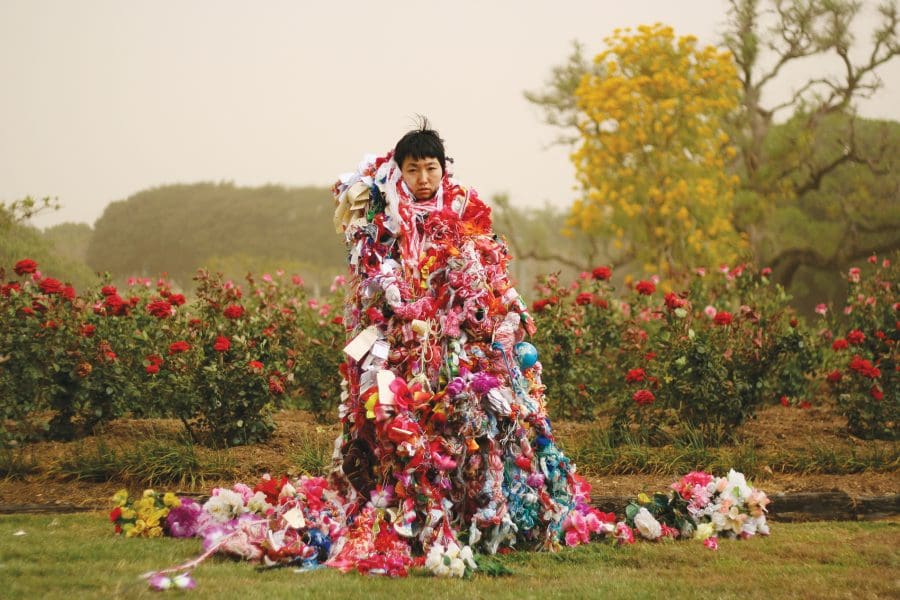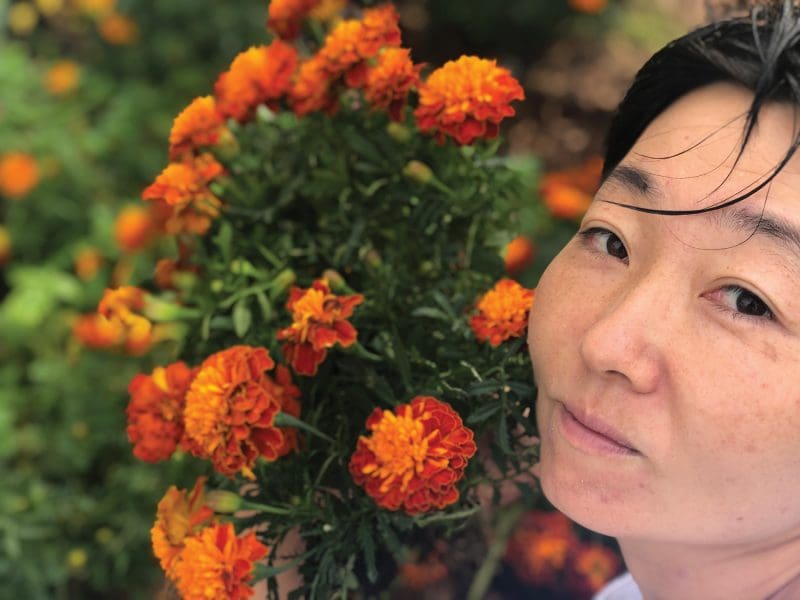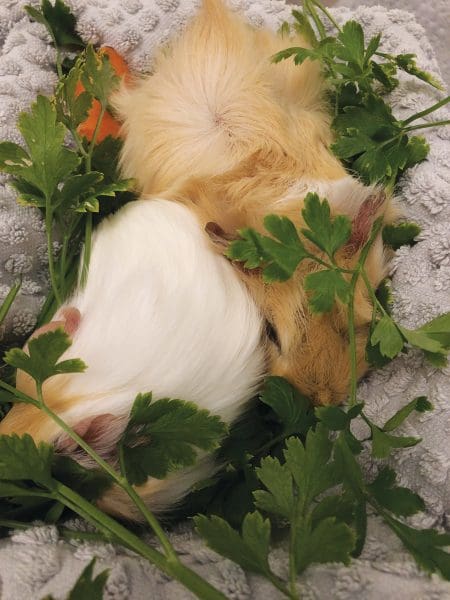
Making Space at the Table
NAP Contemporary’s group show, The Elephant Table, platforms six artists and voices—creating chaos, connection and conversation.




Looking at the work of Japanese-Australian artist Hiromi Tango, it is clear she knows her way around haberdashery. Tango’s large-scale sculptures, installations and performances manifest as brightly coloured tangles of neon tendrils, twisted threads and clandestine layers of knotted fabric, each carefully woven together to create multi-faceted forms that evoke memory and emotion.
Healing and transformation are key elements in Tango’s art practice. During the course of her career, she has spent time working with neuroscientists and mental health workers to learn how the brain responds to colour, texture and light. Personal experience is deeply entwined in her process-driven work and she prefers to use recycled fabrics that hold important emotional connections. “I often use materials such as memory-laden second-hand clothing and linens,” Tango explains. “I make sculptures with my grandmother’s silk kimono, children’s precious clothing they have outgrown—these carry such rich memories and emotions. In this way, each work becomes a three-dimensional patchwork.”

The first time I saw Tango’s work was when I had recently become a mother. It was Insanity Magnet, 2013, a series of photographs depicting Tango draped in a cascade of textile offcuts, pompoms, paper tags and coils of fabric. It looked like a physical representation of how I felt at the time, bombarded with a slew of new information and gender expectations—all sticking to me at once with no inclination of stopping. I later found out Insanity Magnet also related to Tango’s experience of becoming a mother and the struggle of maintaining a sense of self while being completely emotionally and physically available to another. “The motherhood journey started for me 12 years ago, and I am still learning every day,” she says. “I was diagnosed with both post-natal depression and carpal tunnel syndrome a few weeks after my first daughter was born, so I felt my hands—integral to a textile-based practice—were broken, stolen, and I felt disconnected within myself. I learned to create boundaries and consciously embark on a journey of wellness for myself.”
Tango describes herself as a “site- and situation- specific artist,” and I was curious to find out how she had been responding to the COVID-19 pandemic. When we converse, it is in between guiding our daughters through home learning while juggling our own work. To get through this challenging time, Tango has been working in her garden, harvesting vegetables and feeling the gritty texture of earth between her fingers. She tells me the colour green has been soothing and that her children have adopted two guinea pigs. Cooking has also been calming, and Tango’s favoured shapes and colours are evident in the food she makes. Long strips of home-made pasta resemble threads of wrapped fabric, and the green and red decorations on cakes recall the vivid colours of her artwork. “We now have time to cook everything from scratch—bread, pasta and ice-cream—things I always wanted to do but not always had the time for.”

When time allows, Tango has continued to add to her creative practice throughout isolation. Unlike her room-sized pieces, Beyond Borders, 2020, is a mixed media work on canvas, created to ease the pain of being separated from her parents in Japan. Diminutive, dot-like details swirl across the surface to form the shape of a bird. “In Beyond Borders, I imagined my spirit could fly like a bird to my mother and father,” reveals Tango. “That my spirit might interact with nature and bring healing energy to Japan.”
Reminding me of clusters of tiny microcosms existing within a moss-covered forest floor, Tango’s considered mark-making and soft green palette reflects an underlying need to create harmony and balance. “When the international borders closed, my heart felt squeezed with the ache for my family,” Tango says. “Then I realised this situation is beyond my control. We can’t control our external circumstances, but we can control how we respond. If we remain attentive, responsive, and aware of the needs of others around us, it ultimately helps us to adapt to change.”

Looking to the future, Tango will eventually return to her solo and community art projects, working in aged care and with the mental health industry. Her repertoire will once again extend beyond singular objects into public environments— huge installations of plant-like structures blooming their way into corners and across ceilings. For Tango, the healing power of art remains a lifelong pathway. “Art has been always part of me, like an antenna or digestive system of sorts,” she says. “I was very introverted as a child and had trouble expressing myself. But art allowed me to build a deep connection to others. Art was always my close friend and it was through creating art that I finally felt free. It is my hope that what I create encourages people to slow down and reconnect on a human level.”
New Now
Hiromi Tango
Sullivan+Strumpf
3 September 2020
This article was originally published in the July/August print edition of Art Guide Australia.